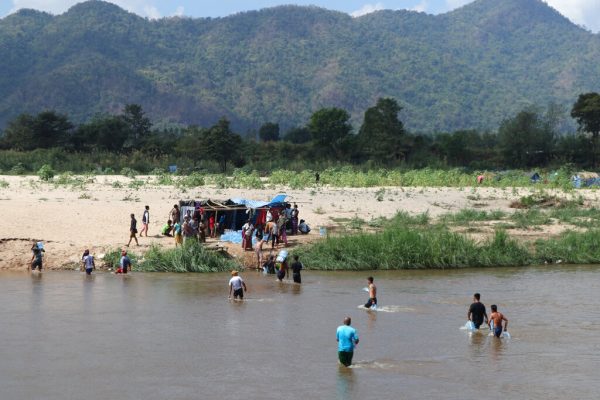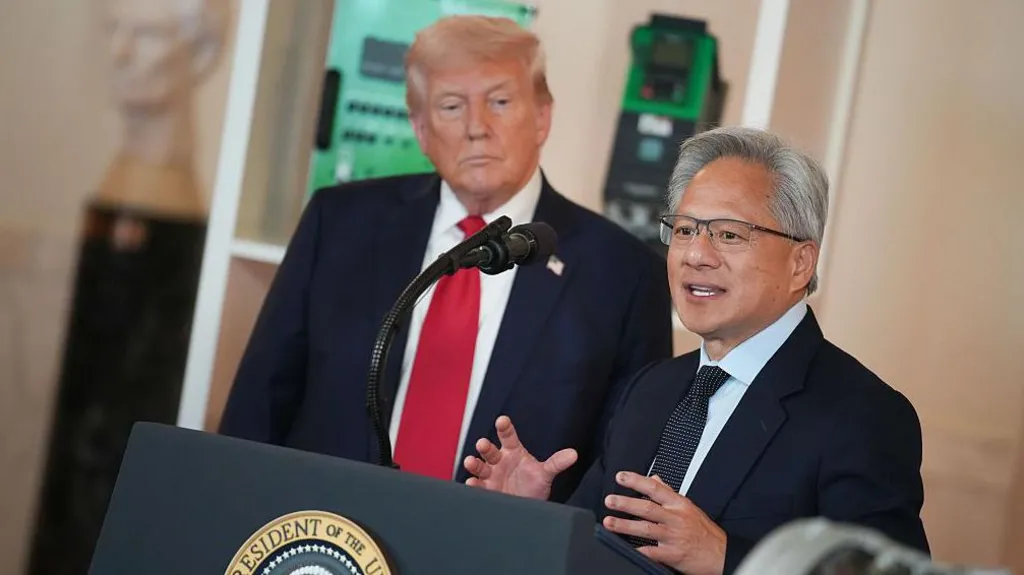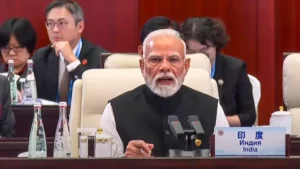How International Donors Can Better Offer Humanitarian Aid to Myanmar
Since the military coup d’état on February 1, 2021, Myanmar has fallen into a state of chaos.
The military’s crackdown on anti-coup protestors and the clashes between the military and the People’s Defense Forces and ethnic armed organizations have resulted in a devastating humanitarian crisis across the country. According to UNHCR’s latest emergency update, an estimated 268,000 people have been displaced within Myanmar and an additional 22,000 have sought refuge in neighboring countries. Furthermore, the collapse of the country’s healthcare infrastructure following the coup has severely amplified the effects of COVID-19.
The need for humanitarian aid is obvious. However, delivering resources to the most vulnerable has proven to be extraordinarily challenging with the Tatmadaw’s active effort to immobilize aid organizations. An analysis of the battle fronts and the state of territorial control, however, reveals local aid infrastructure and underutilized human resources in the borderlands, through which donors and international organizations could more effectively channel humanitarian aid to the people of Myanmar.
Last year’s coup was a shock to the web of humanitarian and development efforts in the country. The largest international donors and organizations responded to the military takeover with measures to disassociate themselves with the junta. USAID, which previously worked intimately with the pre-coup civilian government, redirected $42.4 million of assistance away from government strengthening projects to initiatives to support civil society organizations. Similarly, the European Union and Japan have suspended their support for development projects to avoid financial entanglement with the military. These donors, balancing their political stance vis-à-vis the military government and the severe need for aid, have established emergency funds. For example, the government of Japan decided last July to provide an emergency grant aid of $5.8 million for humanitarian assistance to the populations in the southeast area of Myanmar. The delivery of humanitarian assistance through existing infrastructure, however, has proven to be extremely difficult.
Diplomat Brief Weekly Newsletter N Get briefed on the story of the week, and developing stories to watch across the Asia-Pacific. Get the Newsletter
In the months following the military takeover, the Tatmadaw imposed travel restrictions on domestic and international humanitarian workers and blocked major roads and aid convoys. Physical attacks and arbitrary arrests of humanitarian and healthcare workers, and raids of local NGO offices, have also been reported. Furthermore, at the height of the COVID-19 pandemic, the junta destroyed emergency supplies and withheld oxygen from private clinics and charity organizations. These measures have led to severe constraints on the delivery of emergency resources to the country’s most vulnerable people, all against the backdrop of an increasingly dire banking and supply chain crisis that is resulting in severe shortages of food, medicine, and other essentials.
Enjoying this article? Click here to subscribe for full access. Just $5 a month.
An analysis of the current conflict landscape and status of territorial control can offer crucial insight into ways aid organizations can circumvent military obstructions and thereby offer better aid in Myanmar. Currently, the fighting in the country is taking places on several fronts and involves a multitude of actors. Firstly, sporadic battles are occurring across the country between the forces of the Tatmadaw and the People’s Defense Forces (PDFs). The PDFs form the armed wing of the National Union Government, a parallel government formed by a group of ousted elected lawmakers and members of parliament after the coup. Soldiers in the PDFs are mostly former university students and activists. In the rural areas, the PDFs are mostly engaged in guerrilla warfare, bombing military resources and intercepting military trucks on major roads. In the urban areas, particularly in the Yangon and Mandalay regions, PDFs have organized protests and conducted operations to actively target military and police officers. The Tatmadaw has responded with the arrests and killings of PDF soldiers and their family members.
There are also ongoing clashes between the military and ethnic armed groups. Myanmar houses many ethnic groups, and several have established political and/or armed entities to represent the interest of their people. Some groups, such as the Kachin in the north, the Shan in the east and Karen in the southeast, hold significant control over their respective regions. Since the country’s independence in 1948, these armed groups have consolidated their positions by establishing government institutions that are independent from the central state and by housing powerful armies that have been intermittently engaged in battles with the military. As a result, the Tatmadaw has little control over and limited access to some borderlands as opposed to the urban Burman-dominated central regions. These ethnically controlled border regions are referred by Myanmar natives as lumyaukneimyei, or Free Regions.
The lack of military access to the Free Regions offers an opportunity for the international aid community to get around the challenges of aid delivery posed by the Tatmadaw. The harassment of aid workers and other efforts by the military to obstruct the delivery of humanitarian aid has occurred either in the Burman-majority central regions or on major roads that are connected to significant urban areas. Many local aid workers, along with protestors from the cities, have fled to these Free Regions due to the draconian crackdown by the military. The large exodus from the central Burman area and the battles between the Tatmadaw, PDFs, and EAOs, has increased the number of internally displaced people in the Free Regions. Aside from a shortage of food, there is a severe lack of medical supplies. Many of the refugees who have managed to reach the free regions suffer from artillery wounds inflicted by the military, while an increase in waterborne diseases has been reported in the makeshift camps.
A further review of the existing aid infrastructure in these Free Regions reveals great potential to deliver aid. Firstly, there are many local aid groups active in the ethnic states. Many have established a working relationship with their respective ethnic armed groups, which have offered them shelter from the harassment of the Tatmadaw. The majority of these local aid groups, however, are very poorly funded. International donors should divert resources to support these local organizations. Furthermore, among the people that have fled the urban areas to the Free Regions are many capable professionals, including doctors, nurses, and humanitarian workers, who were persecuted due to their participation in anti-military protests. Currently, more than 500 trained doctors and nurses have set up emergency units in the Karen region. Unfortunately, they are again functioning with highly limited resources. Supporting these emergency units would be an effective way to offer some basic health services to the many displaced people in the most vulnerable region in the country.
The humanitarian situation in Myanmar is dire. More than ever, help from the international community is needed. As part of its effort to consolidate power since the coup, the military has engaged in destructive activities to immobilize the humanitarian aid infrastructure. The analysis of territorial control however reveals a path through which international organizations can circumvent around military interventions. International organizations should focus on delivery resources in the borderlands of the country where the military has limited access. Capitalizing on local efforts by supporting the poorly funded organizations in the borderlands will be most effective in helping the most unprotected in Myanmar.










